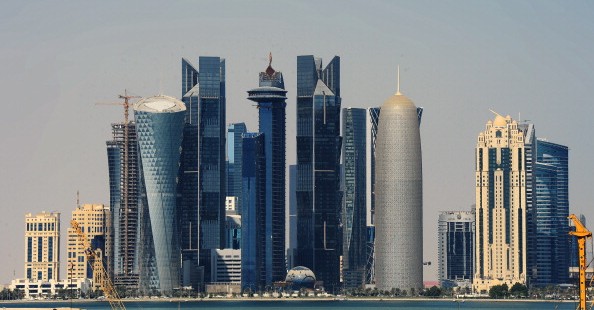The Cost Of Qatar’s Punchy Spending Style
It is often unclear what Doha wants back from its investments – an ego boost, political, or a financial return.

Qatar’s spending spree is beginning to risk unintended consequences. The tiny Gulf country has made its presence felt by splashing its cash on seemingly random targets, buying Western luxury brands and large stakes in blue-chip stocks at the same time as propping up the Egyptian economy. The scale and frequency of Doha’s investments make it impossible to ignore but its investment style may be undermining efforts to cultivate lasting strategic alliances.
Putting a number on how much Qatar is spending on foreign investments and acquisitions isn’t easy. The resource-rich country will have a current account surplus worth 27 per cent of GDP, or $51 billion, this year, according to estimates by the International Monetary Fund. The Qatar Investment Authority, its sovereign fund, boasted of having $30 billion to spend last year alone.
Some of Qatar’s expenditure makes financial sense, earning a decent return and diversifying the economy away from oil and gas to other more stable sources of revenue. But many of its high-profile projects – such as its expansion of its influential Al Jazeera television network or purchase of trophy assets like the Valentino fashion label – lack compelling commercial logic. The only thing Qatar’s investments have in common is that they forge a new link between the emirate and the global system.
Buying connectivity
It’s not hard to see why Qatar might want to buy connections, familiarity and influence around the globe. The tiny country with a local population of around 250,000 is the richest in the world on a per capita basis. It is surrounded by larger powers in an unstable region. Iraq’s invasion of Kuwait in 1990 showed the vulnerability of small Gulf states. Qatar’s security is partly strengthened by its status as the world’s largest supplier of liquefied natural gas, and the fact that it is home to military bases used by U.S. forces. Still, international spending boosts Qatar’s visibility and gives others a stake in its sovereignty.
The problem is that Qatari cash is still perceived as a last resort by businesses in need of capital, rather than a supportive steward like, say, Warren Buffett. That’s partly because Qatar has made a reputation for aggressively targeting firms when they are in distress. Qatar’s investment in British bank Barclays in 2008 has generated good returns but it has also been dogged with controversy. In the latest example, Qatar is reportedly seeking an effective “first right of refusal” from the government over some of Britain’s biggest infrastructure projects in exchange for investing billions.
It is often unclear what Doha wants back from its investments – an ego boost, political, or a financial return. Qatar appears most heavily invested in the UK, a favoured destination for rich Gulf Arabs escaping the blistering desert summer. The two countries share a royal connection. Real-estate developer Qatari Diar famously scrapped its original plan for the prime Chelsea Barracks site in London after heir-to-the-throne Prince Charles objected to the modern design. But the site, acquired in 2007, still remains undeveloped.
A lack of consistency is also a concern. Take the QIA subsidiary Qatar Holding. It made a welcome evolution from a passive to an active investor in global stock markets last year when it forced Glencore to improve the terms on its agreed merger with London-listed miner Xstrata. But Qatar abstained from voting on the side issue of retention bonuses which would have pitted it against top UK institutional shareholders. It remains unclear if Qatar expects to develop strategic links with the commodities giant.
Flexing muscle
Increasing investment confidence has coincided with a more interventionist approach to foreign policy. Qatar was previously content to play a regional role as a mediator. In recent years, it has become an active supporter of the Arab spring, supporting military intervention first in Libya and now in Syria. Doha has thrown its weight behind Egypt’s ruling Muslim Brotherhood with aid worth more than $5 billion. But the Qatari flag has been burnt in Tahrir Square as the Islamists blunder their way through the transition. In France, a plan for Qatar to invest millions of euros to help regenerate poorer suburbs has prompted skepticism from local politicians.
Qatar’s various initiatives have bought it high visibility externally. But can it effectively manage its increasingly sprawling interests? This is a small country that arguably lacks the human capital needed to actively supervise such a diverse portfolio, and communicate with its growing set of stakeholders. Unanswered questions about the country’s financial and political objectives are hurting Qatar’s image as rumor is left to runaway with itself.
This will be difficult to put right as long as governance is opaque and decision making is so tightly held within a small circle of individuals, including the emir and the prime minister. Other resource-rich countries have avoided the problem by making fewer high-profile investments and relying more on external fund managers to generate returns out of the spotlight.
Qatar is not blind to criticism. Doha is planning a bonanza of initial public offerings at home, including the listing of a $12 billion investment vehicle half owned by the sovereign fund, to ward off any domestic discontent that its population isn’t sharing the benefits of the state’s spending. That includes an ambitious infrastructure rollout across the country to host the football World Cup in 2022.
But Qatar cannot control the broader investment climate. The Gulf emirate has found it easy to deploy funds and make a name for itself in past years when demand for rescue funds has been high and competition for assets scarce. In the process, Qatar has won a reputation for being a demanding partner, aggressive on fees, and unpredictable. As the Middle East settles post-Arab spring, Western economies recover and capital becomes more abundant, it will be harder for Qatar to throw its weight around.
